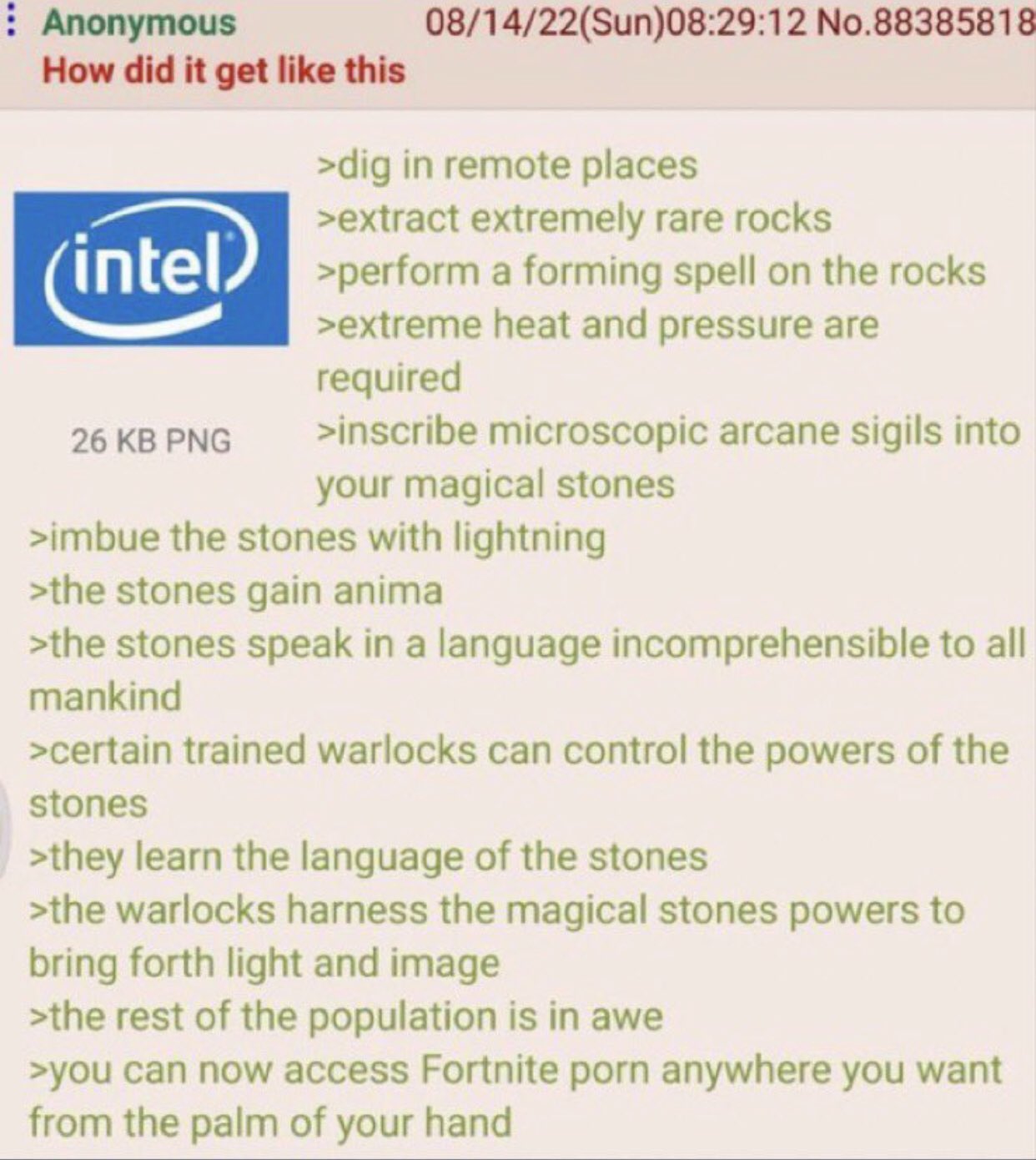"extremely rare" is a way of saying second most common that I haven't heard before.
Greentext
This is a place to share greentexts and witness the confounding life of Anon. If you're new to the Greentext community, think of it as a sort of zoo with Anon as the main attraction.
Be warned:
- Anon is often crazy.
- Anon is often depressed.
- Anon frequently shares thoughts that are immature, offensive, or incomprehensible.
If you find yourself getting angry (or god forbid, agreeing) with something Anon has said, you might be doing it wrong.
The rare stone thing would be better for nuclear power. Find lots of rare stone, put it together in a huge pile, they get warm and cause mysterious diseases.
Uranium is actually pretty common, refining out the right isotope is the complicated part. Heck there were a couple natural nuclear reactors in a place that generated power for a few million years.
https://en.m.wikipedia.org/wiki/Natural_nuclear_fission_reactor
Isn't uranium that's pure enough naturally to cause a reaction on its own really rare? I'm referring to the Chicago Pile experiment. It was so simple that it could have been theoretically built thousands of years ago which is crazy to think about.
Not really. Every single shovel full of dirt has trace amounts. It's just gathering enough into a pile. Like I said, nature did it on earth, before humans existed. It's weapons grade uranium that's really rare
You can't get a reaction when it's that trace though. It needs to be unusually pure to be able to stack a bunch of raw ore and get a reaction.
Nature did get the reaction with no humans. I don't know what to tell you
Sure, Silicon works as a cheap base. Boron, phosphorus, arsenic and antimony are also used in the process, though. Other elements are also finding use in the process.
There is also a minor error in the middle about the 'sigils'. When scribing process is happening, the other elements are embedded into or deposited onto the substrate between 'scribings'.
Technically correct but just cause there are minerals in the ground doesn’t mean they can be extracted.
Maybe i am wrong but i keep hearing about silicon being harder to come, i suppose op was specifically speaking about the silicon usable for computing.
silicon being harder to come
interesting silicone usually makes it easier for me to come
I don't think they mean silicon, I think they mean gold, which is also a crucial component to electronics.
Gold also isn't all that rare. It's value is so high because of jewelry marketing, not rarity.
Gold is rare, compared to just about every other element, in accessible areas of earth. All the gold ever discovered on Earth would fit inside a 23 meter (75 foot) cube. This is about 244 thousand tons, in all of human history.
Compare this to iron, where just the United States produces 46 Million tons in 2022 alone.
There is plenty of gold deep within the Earth - it is very dense, so it sank towards the core when Earth was recently formed - but on the surface and the proximal crust, it is not found in abundance.
Is that 23mx23mx23m or 23 cubic meters?
Those...Are the same thing?
Edit: I thought they meant 23x23x23 as in dimensions not multiples
23x23x23 is 12167 cubic meters.
Okay I see where I fucked that up
The masks used in litography to compensate distortion of details smaller than wavelength are pretty much at the point of being magic circles.
https://www10.edacafe.com/blogs/editorial/files/2023/03/nvidia.png
